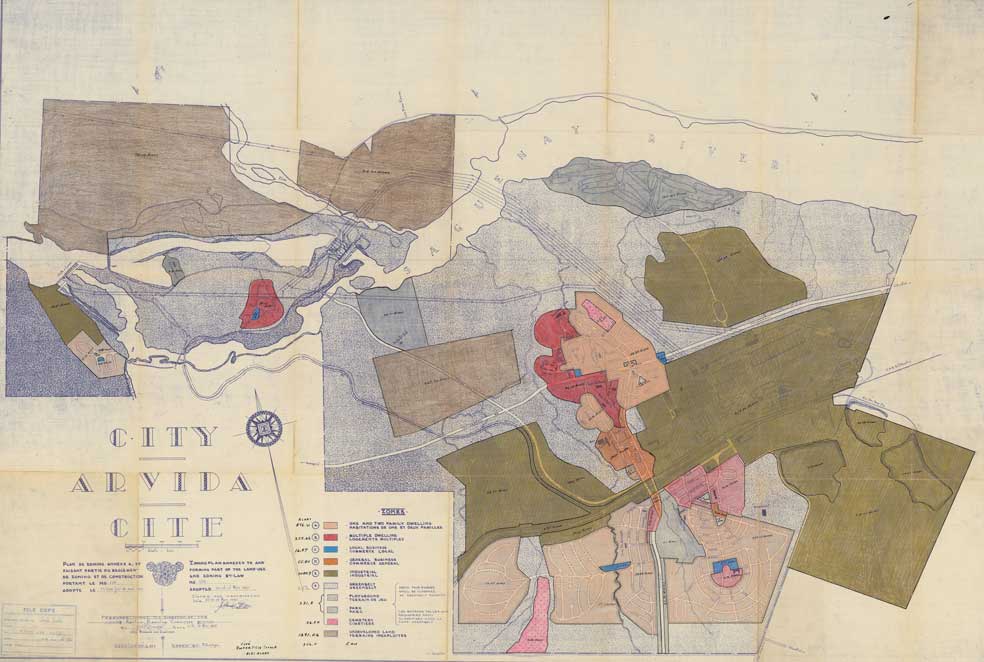Arvida's uniqueness on a global scale; its value and contribution to world heritage
Based on unique soil conditions, on multinational expertise, and on the innovative means of its implementation, Arvida fulfills the possibilities offered by the modernity of the second industrial revolution with regards to the integrated territorial and social development, based on an urban plan designed for this purpose. This project merger of industrial and social features comes together in a unique synthesis of urban planning theories from the 19th and 20th centuries, stemming from a culture based not on collective dynamics, but on individuation and the particularization of identities. This unique company town is thus the missing link between emerging social utopias of the 16th century and the advent of public housing and urban-planning policies of the 20th century.
 |
Territorial zoning of Arvida, circa 1950. |
|
“The magical metal of the 20th century,” excerpt from an annual report by Alcan, 1949. |
 |
While its industrial project would propel this world-renowned city of aluminum to the forefront of the Second World War, Arvida would reform the social order of paternalistic model cities, while showcasing the contribution of America in terms of housing, construction, and territorial management. Its design and landscape intentionally articulate the reversal of the traditional representation of power in the city, in favour of the advent of a democratic and egalitarian society.
The heritage value of Arvida is summarized as follows:
- A masterpiece of urban planning showcasing human creative genius, Arvida deliberately combines Western ideals and American legacy in a unique materialization of secular utopias. Remarkable for the holistic nature and symbolic dimensions of its plan, it is exceptional in its intention and scope, egalitarian housing, vernacular aesthetics, realization, and conservation.
- An urban transposition of the multinational networks of its creators, Arvida shows a considerable exchange of influences in the planning and building of cities and industrial communities. While hybridizing Nordic and American figures, its houses, households to citizens of Arvida from 36 nations, united local traditions with a new culture.
- Designed to foster ownership and belonging, Arvida’s housing and architecture attest to Canadian cultural traditions. In the 20th century civilization, its regionalist intention offsets international style and universalist heritage, in favour of expression and preservation of local identities.
- The culmination of a century of research on housing and the city itself, Arvida, the historic capital of aluminum, is an outstanding example of a type of planning, construction, appropriation, and preservation that illustrate the apogee of industrial society, both in human history and in the history of territorial development in America.
- Born from a project for an integrated plant based on unprecedented hydroelectric resources and the promises of “magical metal,” Arvida is directly associated with the Second World War. The aluminum it produced and showcased was pivotal to the role of both Canada and the Allies during the global conflict.


 Official City of Saguenay website
Official City of Saguenay website